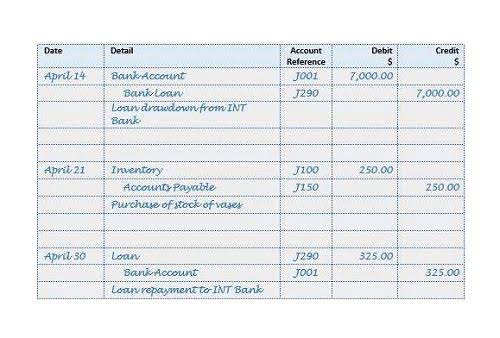
For example, when a line item on your balance sheet presents the balance of accounts receivable, report the value of allowance of uncollectible accounts below the accounts receivable line. Be sure to enter the contra account on the https://www.bookstime.com/articles/present-value-of-a-single-amount opposite column of the account they’re offsetting. If contra assets appear in the credit column, record contra liabilities on side. Normal asset accounts have a debit balance, while contra asset accounts are in a credit balance.
- As such, for an asset or expense account that is naturally a debit account, the contra accounts will be in a credit position.
- The amount in allowance for doubtful accounts is deducted from the accounts receivable account of a company.
- This will ensure the net value of accounts receivable at year-end is not overstated.
- The key example of a contra equity account is Treasury stock, which represents the amount paid to buyback stock.
- For example, it is not very useful to show the PPE cost account and the related accumulated depreciation account separately on the balance sheet.
- The purpose of the Owner’s Withdrawal account is to track the amounts taken out of the business without impacting the balance of the original equity account.
Asset Contra Account
- For example, we need separate accounts to hold the actual cost of property, plant and equipment (PPE) and related accumulated depreciation.
- If the balance in your allowance for doubtful accounts has a credit of $1,000 and your accounts receivable has $20,000 in normal debit balance, then the net value of the receivables is $19,000.
- Occasionally a business has cause to offset an amount owed by a customer (accounts receivable) with an amount owed to a supplier (accounts payable).
- If accounts receivable is $40,000 and allowance for doubtful accounts is $4,000, the net book value reported on the balance sheet will be $36,000.
The accumulated depreciation amount shows how much depreciation expense has been charged against an asset. Contra accounts are more commonly paired with asset accounts, such as accounts receivable or inventory, to reduce the carrying values of those assets. A liability that is recorded as a debit balance is used to decrease the balance of a liability. It is not classified as a liability since it does not represent a future obligation. Including contra accounts on a balance sheet is important as it allows for a more transparent view of a company’s financial position. Accumulated depreciation decreases the value of an asset, bringing it more in line with its market value.
How Are Contra Accounts Reported in Financial Statements?
They are useful in preserving the historical value in the main account while presenting a write-down or decrease in a separate contra account that nets to the current book value. In finance, a contra liability account is one that is debited for the explicit purpose of offsetting a credit to another liability account. In other words, the contra liability account is used to adjust the book value of an asset or liability. Accounts receivable is rarely reported on the balance sheet at its net amount.
Accounting made for beginners

The articles and research support materials available on this site are educational and are not intended to be investment or tax advice. All such information is provided solely for convenience purposes only and all users thereof should be guided accordingly. A company receives rebates for advertising it does on behalf of brands it carries in its stores. For example, a grocery store displays advertisements for a national brand in its weekly flyer. The national brand gives the grocery store cash, reducing the overall cost of printing the flyer.
Liability Contra Account
The following are examples of contra expense accounts used in double entry bookkeeping. A contra expense account is a general ledger expense account that will intentionally have a credit balance (instead of the debit balance that is typical for an expense account). In other words, this account’s credit balance is contrary to (or opposite of) the usual debit balance for an expense account. For example, if your business has accounts receivable of $50,000 and an allowance for doubtful debts account totalling $5,000, the net accounts receivable is $45,000. In this way, a contra asset (credit) lowers the overall value of your accounts receivables (debit) on the balance sheet. In an accounting system, ledger accounts are designed to contain only similar transactions and/or balances.


A contra account is an entry on the general ledger with a balance contrary to the normal balance for that categorization (i.e. asset, liability, or equity). Contra expense accounts play a crucial role in financial accounting, offering a nuanced way to track and report reductions in expenses. These accounts are essential for providing a more accurate picture of an organization’s financial health by offsetting specific costs. Inscrutable Corporation offers long-term disability insurance to its employees under an arrangement in which it pays for the insurance, and then participating employees reimburse it for half of this cost. In the first month of the arrangement, the company pays the insurer $10,000, which Inscrutable records in a long-term disability insurance expense account. It then records $5,000 of contra expense against this account, which is derived from deductions taken from employee pay.

Examples of Contra Accounts
Contra equity reduces the total number of outstanding shares on the balance sheet. The key example of a contra equity account is Treasury stock, which represents the amount paid to buyback stock. Note that accountants use contra accounts rather than reduce the value of the original account directly to keep financial accounting records clean. It offsets the fixed asset account (like Equipment) to show the net book value of the asset.
- Simply hit Control + N under the Chart of Accounts or Edit, then click New (to create a new account).
- If we record depreciation expense in the cost accounts directly, we will lose key information about the original cost of the assets and accumulated depreciation.
- When an expense is initially recorded, it is debited to the relevant expense account.
- Showing contra assets on your balance sheet allows potential investors to see how you write-down a depreciable asset, such as a piece of equipment.
- The amount on the equity contra account is deducted from the value of the total number of outstanding shares listed on a company’s balance sheet.
The balance sheet would report equipment at its historical cost and then subtract the accumulated depreciation. A contra liability is a general ledger account with a debit balance that reduces the normal credit balance of a standard liability account to present the net value on a balance sheet. Examples of contra liabilities are Discounts on Bonds and Notes Payable and Short-Term Portion of Long-Term Debt. Contra Liability Account – A contra liability account is a liability that carries a debit balance and decreases other liabilities on the balance sheet.
Order of Liquidity of Current Assets: Balance Sheet Example
When the amount is material, the line item is typically presented separately on the balance sheet, below the liability account with which it is paired. The debit balances in the above accounts are amortized or allocated to an expense, such as Interest Expense over the life of the bonds or notes payable. The amount in the accumulated depreciation account is deducted from the assets of a company, such as buildings, vehicles and equipment. This can help anyone viewing the financial information to find the historical cost of the asset.
